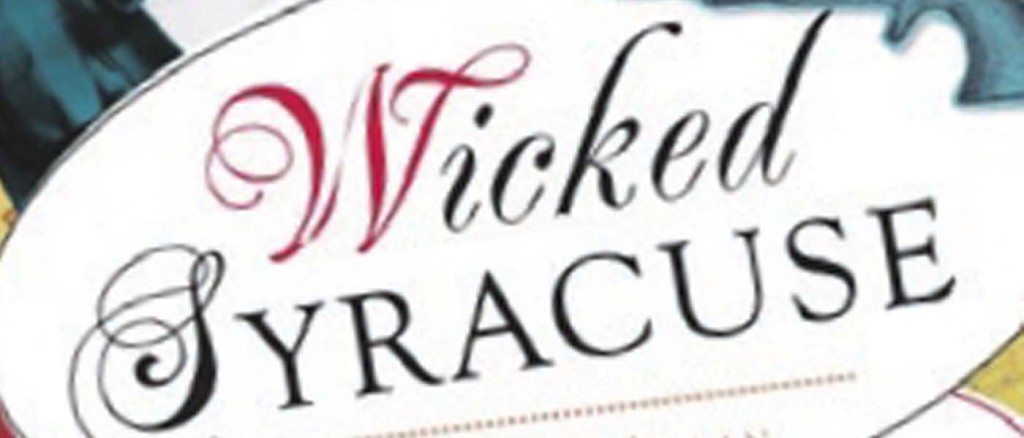“Who knew it was a riot that prompted politicians to make Syracuse the city it is today?” asks Neil MacMillan. His new book, Wicked Syracuse: A History of Sin in the Salt City (The History Press; 144 pages; paperback, $16.50), reports some of the lesser-known facts about crime in the city.
MacMillan has been a freelance writer since 1988. His choice to write about Syracuse was an obvious one since he was born and raised here. He also describes himself as a “history geek.”
The book focuses on crimes in Syracuse between 1840 and 1950. MacMillan says he didn’t want to go into too much recent history. “I didn’t want to touch raw nerves since it was about a sensitive topic like crime,” he says.
What makes it a remarkable read is that MacMillan highlights how bizarre some of the crimes were. One of the chapters, titled “You stole what?,” discusses theft in Syracuse. A part of this chapter discusses one Carmelo Romano who was sentenced on July 23, 1908, to 25 days in the county pen for stealing 800 Post-Standard newspapers. The papers were left on the sidewalk near James and Warren streets. Roman claimed that he thought they were old papers, but this was disproved when papers from doorways were also found in his cart.
MacMillan’s detailed style of writing adds color to Wicked Syracuse. “While writing this book, my biggest resources were records from the office of administration of justice department and newspaper and library archives,” he says.
What makes the book especially entertaining is MacMillan’s commentary.
“The book teaches the readers that I’m a bit of a smart aleck,” he says.
At several points in the book, the reader may be caught by surprise. Even though the crimes remain the same, in some cases, they were executed in unusual ways. One such example is provided in the chapter “The dashing train robber.” It follows the story of Oliver Curtis Perry, who single-handedly robbed locomotives. He was the first person to rob a train solo. During his last, unsuccessful robbery in 1892, he almost stole an engine by just driving it away in an attempt to escape. However, he was caught, tried, convicted and sentenced to 49 years in Auburn Prison.
All the chapters have some kind of visual aid to support the stories. Pictures from library or news archives or at least a hand-drawn map by MacMillan to point out where the scene of the crime is located.
The first chapter discusses a riot that led to the merging of Salina and Syracuse, making it a major city in New York. New Year’s Day 1844 was a day of celebration for Syracuse and neighboring Salina. However, a riot broke out at Cook’s Coffee House, at Washington and South Warren streets. By 1844, Syracuse was a small village and was competing with the neighboring town of Salina for economic prosperity. William Blake and his fellow Irish salt boilers came in from Salina looking for a fight. The riot, fueled by drink and ethnic bigotry, compelled the proponents of merging the village of Syracuse with portions of Salina and led to the incorporation of the city of Syracuse in 1848.
Why did MacMillan choose crime to write about?
“When writing about history, everyone talks about Ephraim Webster, the Baldwin family and George Barnes,” he says. “They are undoubtedly an important part of our history. But you can’t understand what these people accomplished without understanding the darker side of Syracuse.”
-By Aasimah Navlakhi



